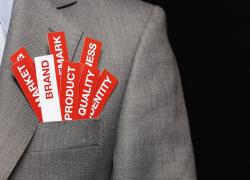The Digital Summit came to Denver on Tuesday and Wednesday, and it was a whirlwind of avid marketers, excellent speakers, coffee, actionable insights, quality networking, and more coffee.
I laughed so much, learned so much more, and came out of the event inspired and excited.
So excited, in fact, that I can’t help but share my learnings with you so that you too can take some actionable advice from the two-day, information-packed event.
We’ll be covering the highlights from these topics:
Feel free to jump ahead to any section if you’re in a time crunch; otherwise, if you don’t want to miss what the pros are saying, keep on reading.
Consumer Behavior
The first lesson on consumer behavior came out bright and early on day one when best-selling author Seth Godin said,

Even though online attention spans are shrinking, it’s still crucial to treat your audience like they’re human beings...because they are, and because you always should.
It’s important to go beyond the surface and identify all of the emotional drives, unique perceptions of your brand, and other factors that come together to create the consumers you are trying to reach, not just use blanket assumptions across the board.
That’s where psychology is very effective.
Jeanette McMurtry, CMO of Elateral & author of “Marketing for Dummies”, said,
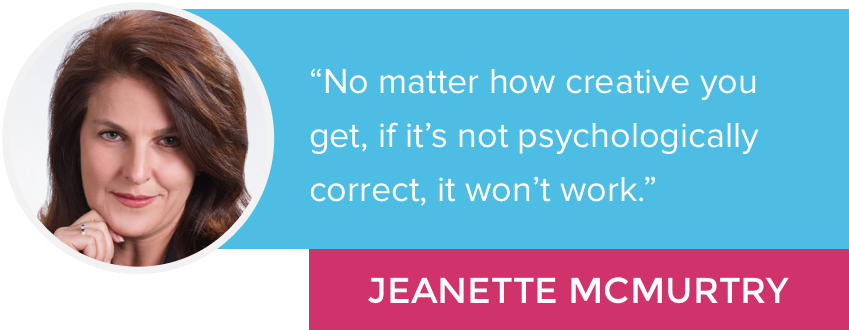
How so?
Well, it turns out that our unconscious mind controls 90% of our thoughts, and the top decision-driver, unconsciously, is survival.
Consciously, it’s helpfulness...which shows how disconnected we are in what we think we want versus what we actually want.
What does this mean?
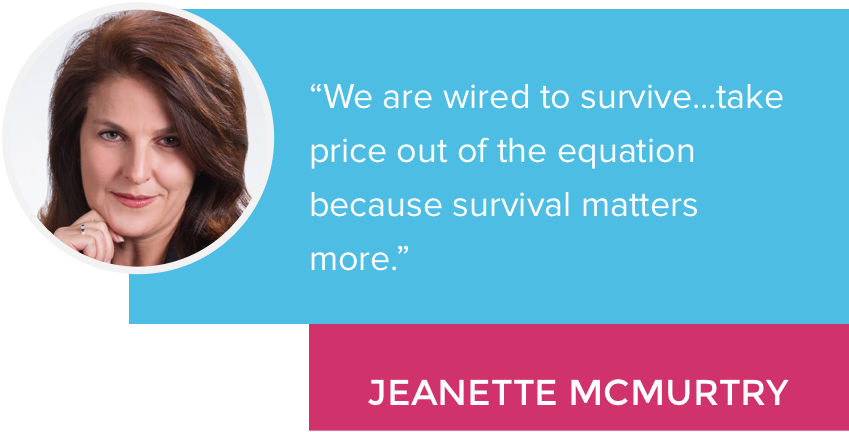
Don't bother taking the angle of being the cheapest around, because that simply does not work.
We, as marketers, need to focus on what makes people need our products or services in order to be successful.
That’s why she goes on to tell us all that:
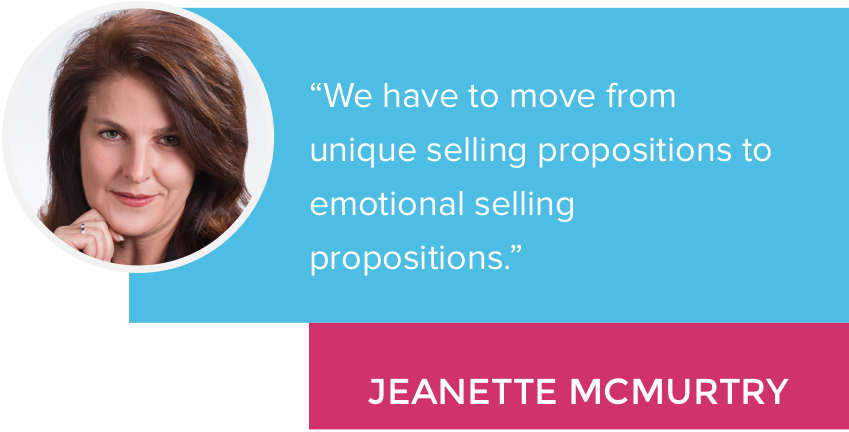
If you can tap into the emotional elements that trigger your prospects to make a purchase, you’re golden.
If not, either you’re doing something wrong, or you may be attempting to reach the wrong people.
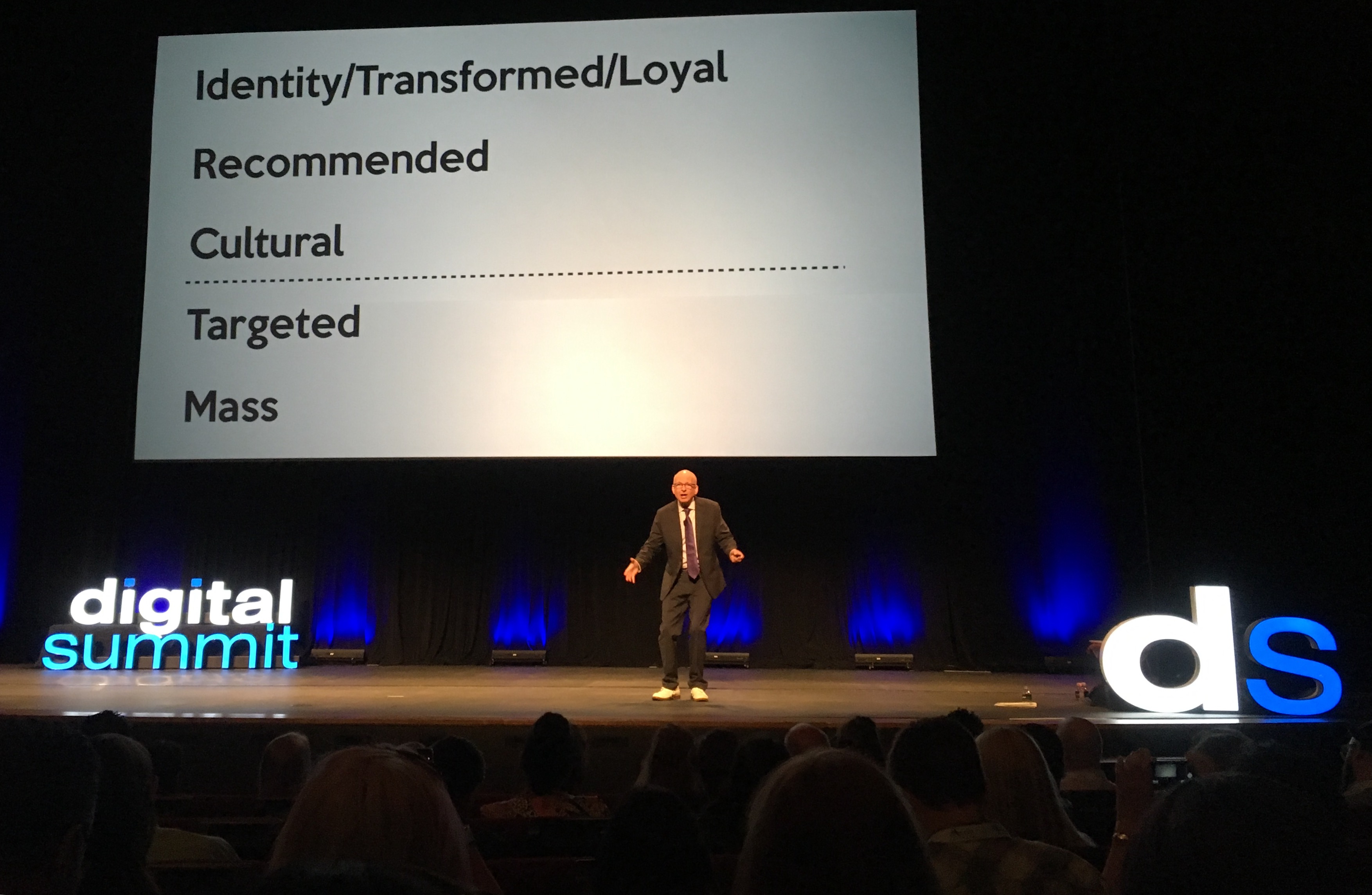
Seth Godin advised us to not bother with casting a wide net because:

For example, though smartphones are widely popular, some of the late-to-the-game users may have switched solely because Nokia finally stopped producing that brick-like cell phone they loved, so they resorted to joining the mainstream demographic of smartphone users out of necessity, not brand loyalty.
So, trying to convert the masses is not a good use of your marketing resources.
That’s why Brian Kroll, Regional VP of Sales at AdTaxi, said,

Those are the people who are engaged, loyal, relevant, and actually care about your brand...and are the most likely to buy from you because of all of these factors being a good match.
Godin also touched on this topic as a cautionary tale to spreading your efforts too thin:

Focusing on more specific, more engaged audiences allows your marketing strategy to be lean, efficient, and garner higher quality leads than otherwise.
Let’s go back to smartphones for a second, since we’re talking consumer behavior here.
With over 100 million hours of Facebook browsing happening on mobile, it’s no surprise that Jason Dailey, U.S. Agency Partner Development lead at Facebook, said,

Dailey instantly proved his point when he asked the audience to unlock their phone and pass it to the left.
Our response?
A ripple of nervous laughter and tightened grips around our precious devices.
All jokes aside, Dailey reminded us that mobile is so very important - and that fact isn’t changing anytime soon.
With everything we do as marketers, we must always remember to optimize for mobile as well as desktop.
Customer Journey
Alex Stein, Director of Marketing & Social Media Analytics at Marriott International, hit the nail on the head from the get-go:
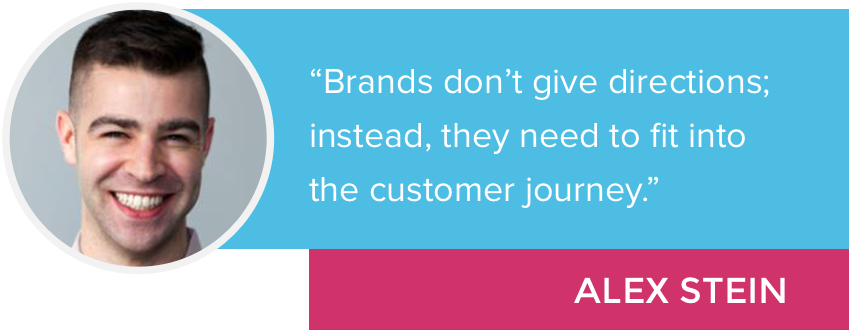
We’ve fully moved away from being disruptive, so now it’s our jobs, as marketers, to identify who is interested, what phase of their decision they’re on, and how we can gently help while being 100% informative and 0% annoying.
However, this is no easy task. Kroll explains that, unfortunately,
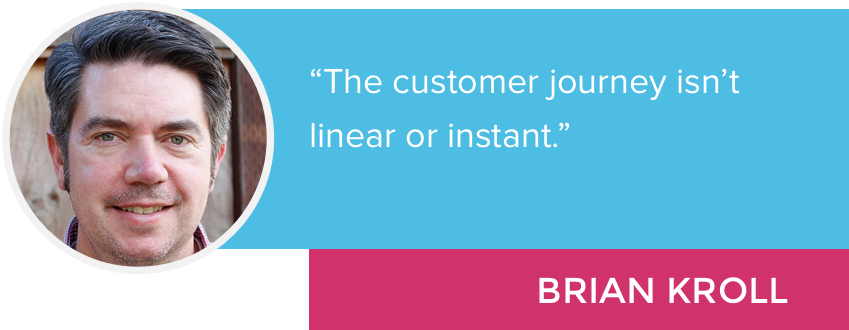
It’s important to recognize that.
We can’t just assume that the customer will want to purchase as soon as she gathers all the necessary information, and we certainly cannot assume that the customer will keep moving forward in their journey.
That’s why tracking potential customers’ journeys and always jumping in with relevant information to help them move along is more difficult - yet more rewarding.
With that, it takes a lot of factors to measure success and even more key performance indicators (KPI). Kroll puts it this way:
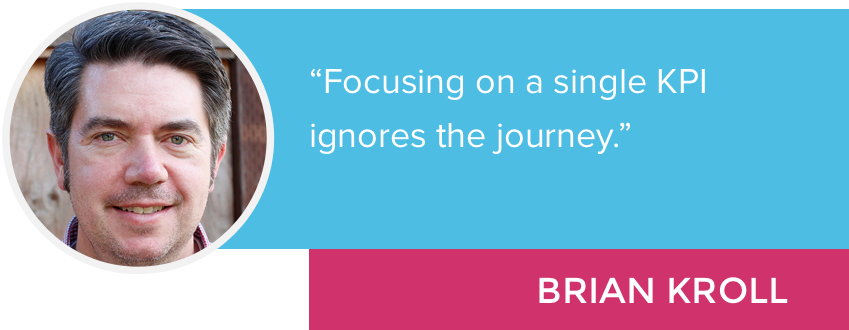
So don’t.
Have a lot of KPIs for the different stages of the journey so you’re truly in sync with where your potential customers are and how well your marketing efforts are going.
Social Media
First of all, why do we use social media in our marketing strategy? It has to have a purpose, to be relevant and useful to our audience, which means that,
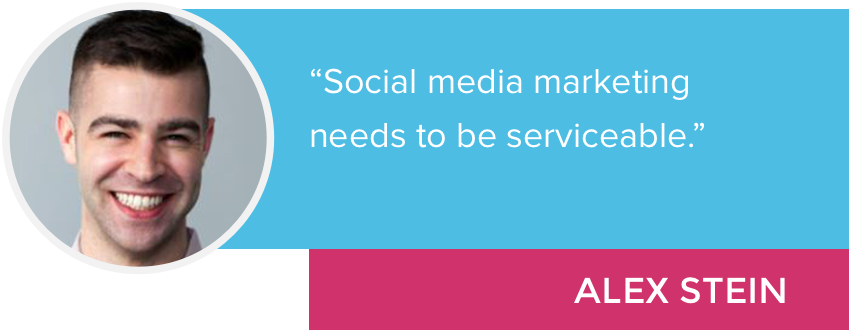
How can we help people find what they’re looking for in their buyer’s journey? What can they do with our content that we share online to help them along? And finally, what content can we influence them with in order for them to choose our brand over another when it comes time to buy?
After all, just ask Stein, and he’ll tell you that:
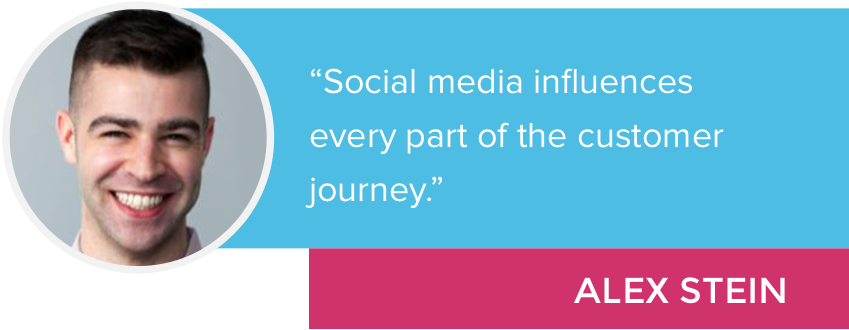
We as marketers are playing the social game in order to create demand for what our brand offers over competitors.
We do this with the content we share, the ads we strategically place, and the overall experience we craft online that reflects our brand’s value to the consumer. That’s why Dailey said,
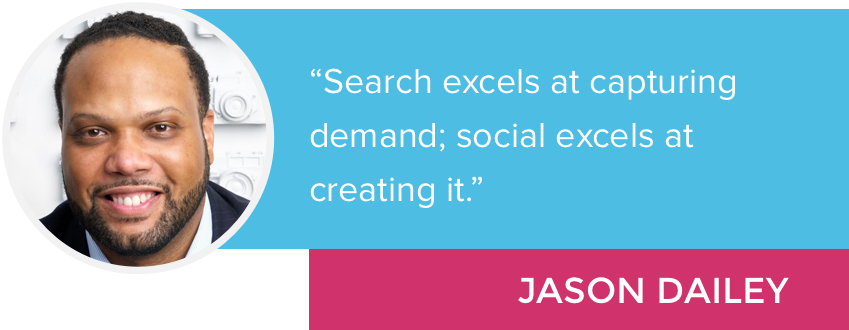
That’s why SEO and social media marketing go hand-in-hand, end of story.
You start on social media as a foundation, and as interest piques, the links, searches, and more drive traffic to your converting goldmine: your website. Everything we do as digital marketers syncs together to get that conversion, typically starting from social media.
So how do we know what content to create, what voice to use, and what people we’re trying to reach?
Besides cold, hard research, Godin spoke of one strategy in which you write for your ideal audience and whoever doesn’t like it can deal with it, which seems to work well for his circumstance.
However, Dan Gilgoff, Executive Director for Digital at National Geographic, has a different philosophy:
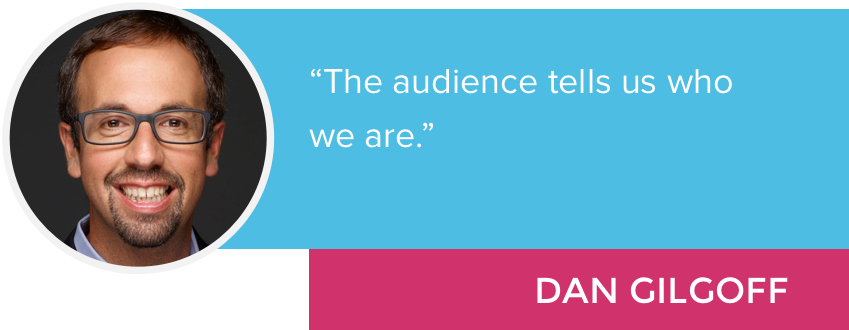
What does this mean, exactly?
He uses close analytics monitoring to determine which topics, what style of messaging, and more resonate more or less with his audience, and then his team creates content that’s highly relevant as a result.
This chameleon approach is effective on a detail level, since you don’t want to be creating content that nobody is interested in, but be wary when taking the advice any further than that.
Your brand shouldn’t change its core elements and personality if one segment is not engaging but another is; it will look wishy-washy at best if you do.
Stick to your guns while also creating awesome content that your audience truly wants to consume.

That bit of wisdom came from Colby Cavanaugh, SVP of Marketing at Emma.
It may sound obvious, but consider it as a mantra for everything we marketers do with email. If it’s any less than exceptional, we’ll know, for the analytics will tell the truth of the matter.
That’s why it’s important to, as CEO and Co-Founder of Email on Acid John Thies says,
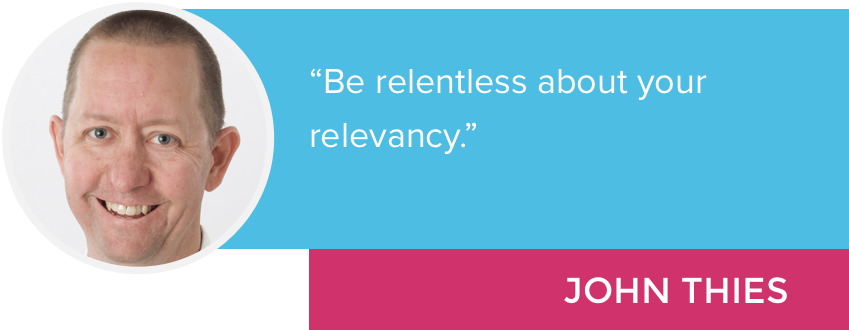
Why are you sending emails?
They must have a purpose and an anticipated resulting action, whether it’s to get more sales, more clicks to the website, more subscribers reading content, or any other goal you’re trying to achieve.
Once the “why” of an email is determined, we must also consider the “how” to make it as appealing and captivating as possible to keep subscribers, well, subscribed.
That being said, it turns out that, according to Thies,

The cleaner, simpler, and more visually appealing your email is, the less the messaging sounds spammy and obnoxious, the lower the chances of your emails ending up in receivers’ spam folders.
Here's a tip from Tom Sather, Senior Director of Email Research at Return Path, on how to avoid getting marked as spam:
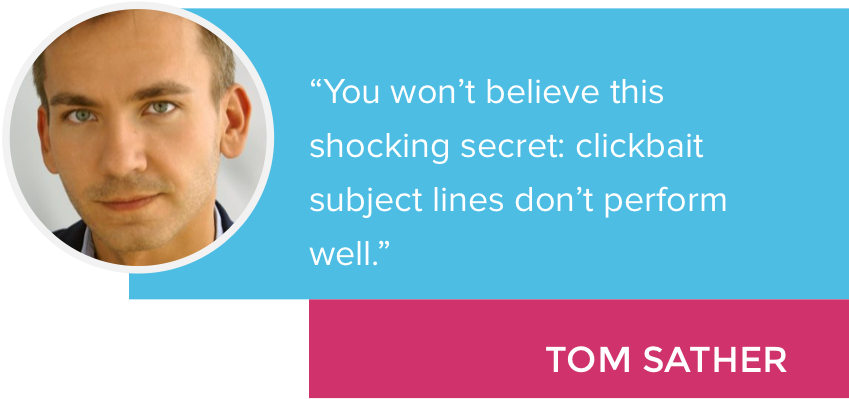
See what he did there? Avoid words like “secret” or “shocking” to escape being lumped with the clickbait folks who abuse those terms like crazy.
This optimal email tip is from Thies:
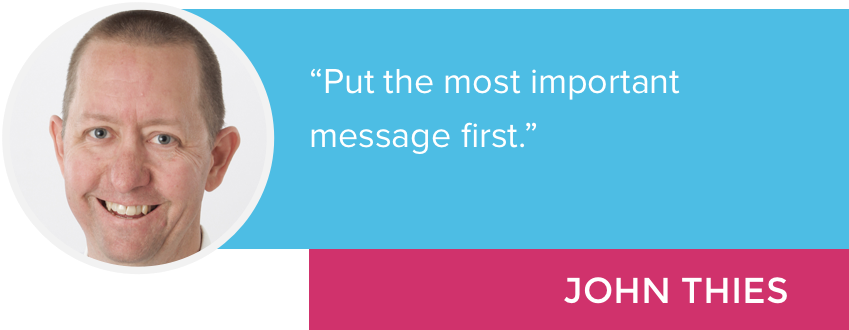
It seems obvious, but it needs to be said.
If someone receives hundreds of emails daily (yours included), it’s likely that he only has enough time and energy to skim the most important ones.
That’s why you’re better off saying the essential stuff right off the bat to prove the email’s importance - or risk being marked as read without getting a chance at a proper read-through.
Content Marketing
Much to my delight, the lunch keynote speaker on day two was the hilariously lovable Morgan Spurlock, Award-Winning Filmmaker & Producer...the “Supersize Me” guy, as you may know him.
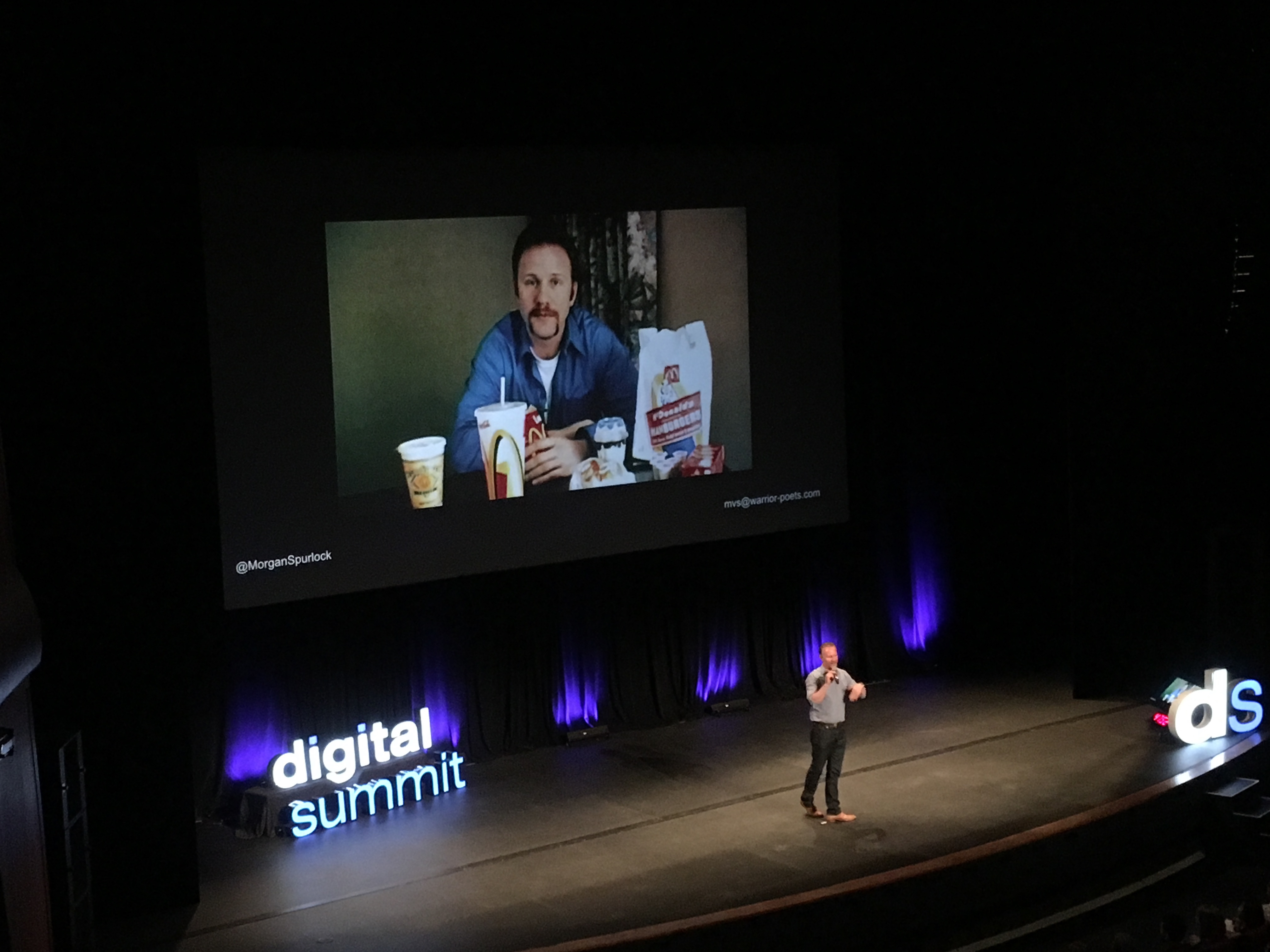
First, he inspired all us marketers in the room by saying:
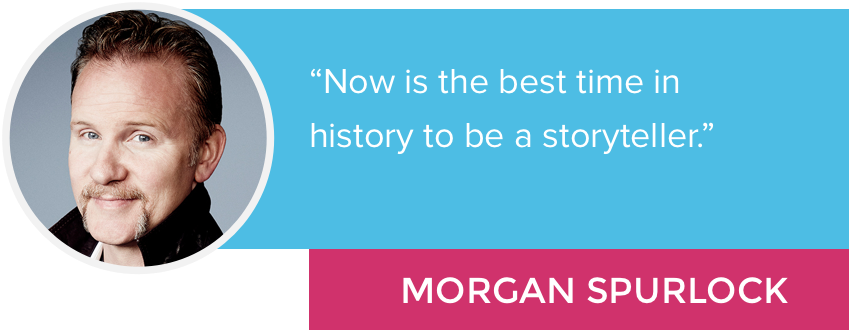
Then, of course, he showed us his jedi-like storytelling skills with some captivating film clips.
There were a lot of laughs and some tears as he took us on a journey of exploring the impact of content marketing - when done well - on an audience, and the value it ultimately holds for marketers and consumers alike.
Spurlock’s next words resonated with me, as I had never thought of content consumption in such a way before.
When talking about his series in partnership with Vulcan Productions, “We the Economy,” Spurlock noted that it wasn’t about ROI, but rather,
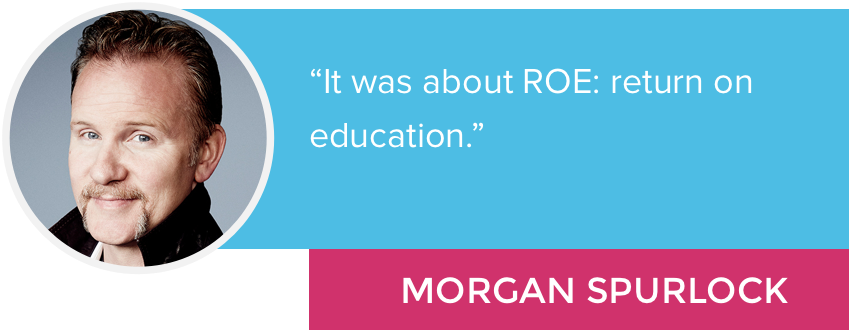
So catchy!
And true - your content should educate, and at the very least, entertain your audience.
Let’s not forget, too, that the most important element of creating content is to make sure that all of your content is high quality. The stakes are high, too.
Melissa Joy Kong, CEO of Iceberg Content Marketing Agency, reminded us that:
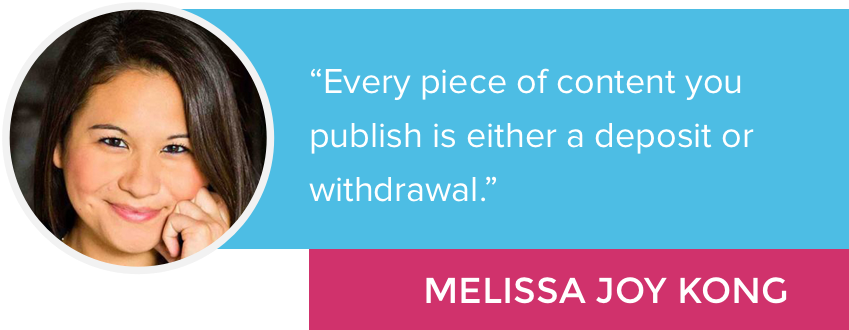
This means that every branded thing you put out there will either make a positive (deposit) or negative impression (withdrawal) on your audience, with positive impressions ultimately leading to increased loyalty - and negative impressions just harm your brand’s reputation.
Don’t just make more meaningless content in order to boost up your blog or to have something - anything - to share on social; you’re just further polluting the virtual airways.
Godin reminds us of the sad truth, of our world that’s stuffed to the brim with spam that gets in the way of the authentic, quality stuff:
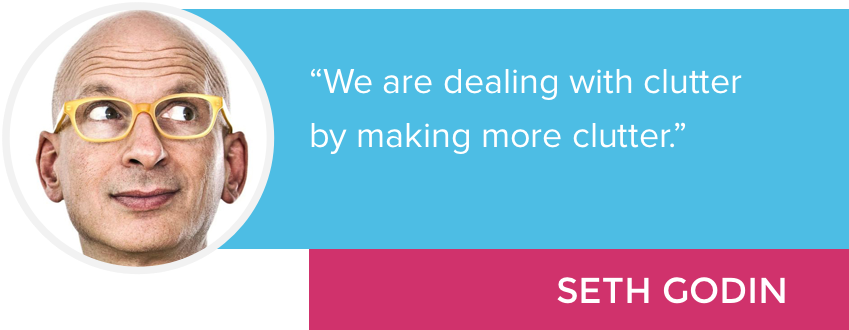
Don’t make clutter.
Write content that is going to be a deposit, not withdrawal.
The second most important element for publishing content is consistency.
When you build an engaged and significant audience, they’ll be looking forward to your newest content, typically at a certain time or day.
Furthermore, if you consistently hit all the right topics that your audience is interested in, you’ve hit a home run. As Kong puts it,
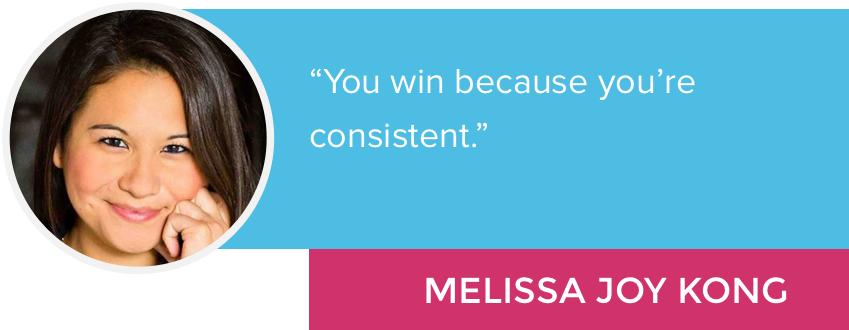
And what’s the prize you win?
Ideally, conversions.
Your content should educate your audience on what solutions they have to their problems and how you can help them along their journey.
Once a prospect is in the final stage of their purchase, deciding on which solution to buy, you want to be their knight in shining armor that they already know, love, and trust.
Besides, what are you producing content for, anyway? Kong says,
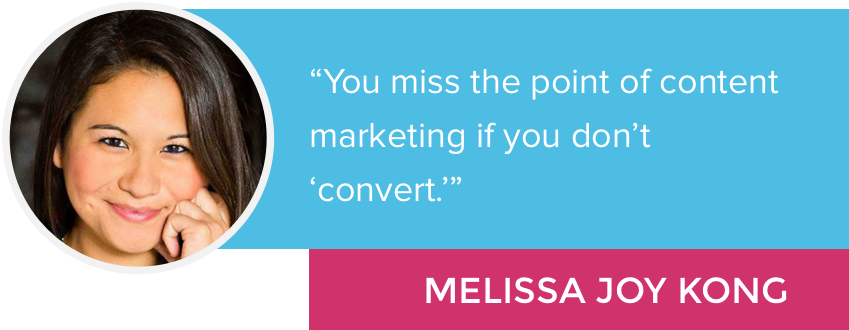
This gets tricky, however, when conversions blind us to the real point of reaching our people with content marketing.
Shana Sullivan, Project Manager & Trainer at Vertical Measures, reminds us that:

It’s easy to get bogged down in the data, results; it’s even easy to see your audience as engagement numbers rather than humans.
Yes, we’re trying to convert, but we’re also tasked with the duty, as marketers, to build something lasting and meaningful from our online interactions.
Sullivan sums this notion up well:
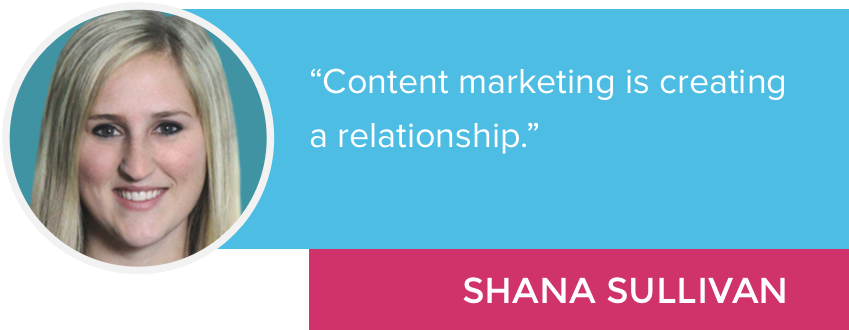
Now, I know that these quotes’ message implies that remarkable, well-written, and engaging content is the key to success, but it’s easier said than done.
And, there are no guarantees - in content marketing as in life in general.
That’s why Sullivan puts special emphasis on the uncertainty of every piece of content’s success:
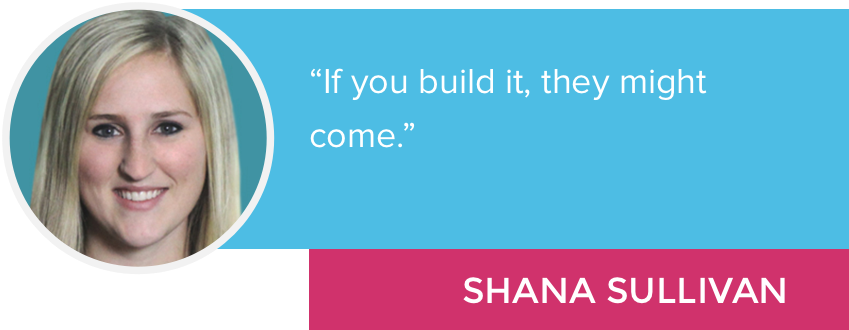
Key word: might .
Don’t get discouraged, though, as there are content formats and ideas that you can experiment with in order to get closer and closer to knowing exactly what your audience wants with every bit you write.
One idea comes from Spurlock, who has dominated the “one-month experiment” side of entertainment:
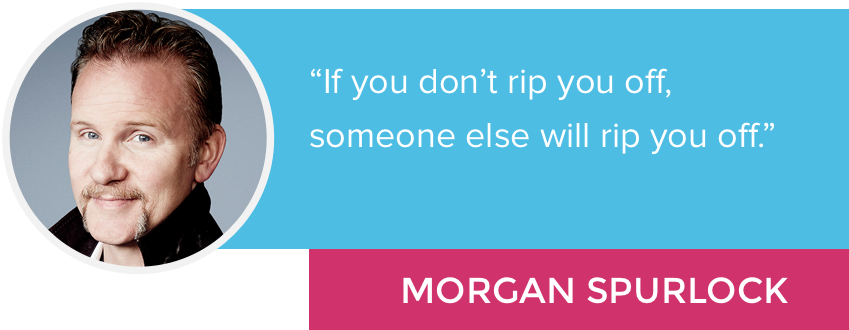
He referred to how he created the FX 30 Days reality show immediately after his film, Supersize Me, in which he spent 30 days (see the pattern yet?) eating only McDonald’s.
He encouraged the audience to spin off their own successful ideas to produce more content - in hopes of perpetuating the success of that form of content before anyone else does.
SEO
Search engine optimization is such an important link between the content and the converting sides of marketing, especially when executed impeccably.
The goal is to get people to your site, but you can’t just magically herd users that way without first engaging, then making the path as easy and natural as possible. Kroll says,
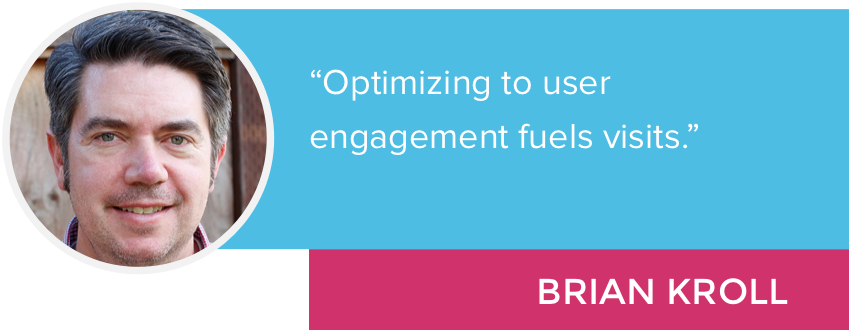
Make it as easy as possible for users who are engrossed in your content to find their way to your site and to put your brand in their mind’s forefront come decision time.
It’s also important, however, to optimize your website for Google results so you please the humans and bots in your life.
If your website isn’t in the top results you’re trying to rank for, will anyone ever find it? To put it bluntly, Kroll said,
!["Position-wise, if you’re not on the first page [of Google search results], you might as well not exist.” - Brian Kroll](https://www.herosmyth.com/sites/default/files/blog/Digital%20Summit%20Denver%202017/SEO/Brian%20Kroll%205.png)
Ouch.
Don’t let that happen to you; optimize your site to rank for the keywords that are most important to your business - but don’t get too lost in the small stuff.
As a marketer who also dabbles in SEO, I took one analogy from SEMrush speaker Jacob Hagberg to heart to ensure that I don’t dwell on the details instead of the big picture:
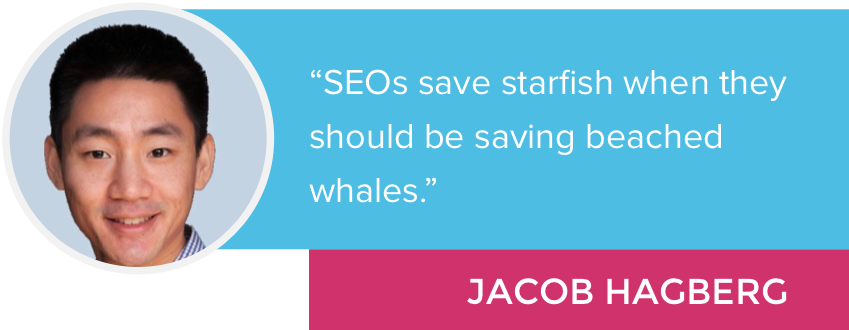
Ranking for branded keywords only does so much.
How many people, realistically, will search for your specific brand when in the first phase of their buyer’s journey, rather than general words to describe their issue?
I’m willing to bet that not many would.
You need to optimize your website to rank for keywords that describe your brand, business, products or services, and do the research to find out what problems translate into which long-tail and shorter keywords will lead the right people to your site.
Finally, there was this great bit of wisdom from Sullivan about building domain authority:

The more strong, authoritative links you can build to and within your site, the more Google will like you and help your ranking along.
So remember, spend your precious links wisely, use specific language within the link text, and gather as many great ones as possible - and your SERP ranking will flourish.
Analytics
Everything in marketing has evolved into a science.
That’s why Mike Tomita, Director of Online Marketing at Marketo said,
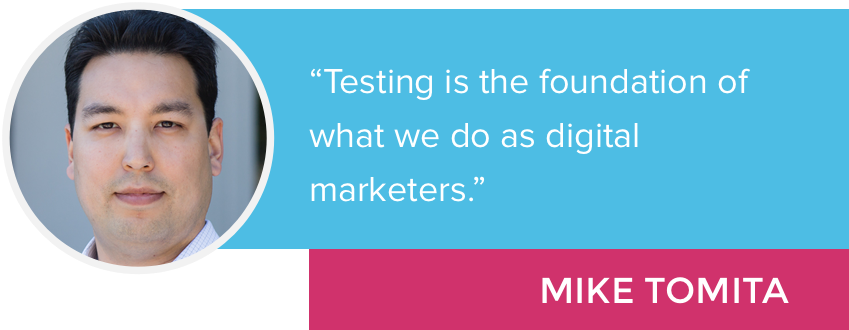
Whether it’s the title of an article, caption, image, time sent out, or other factors, we marketers are tasked with proving the effectiveness of everything we do.
Unfortunately...
while there are ways to extract exact results and determine why something may have worked, there is still room for estimation, especially since humans, as our audience, are exceptionally unpredictable beings in their behavior.
That’s why Mario Vinasco, Marketing Analytics & Data Scientist at Facebook, reassured us that:
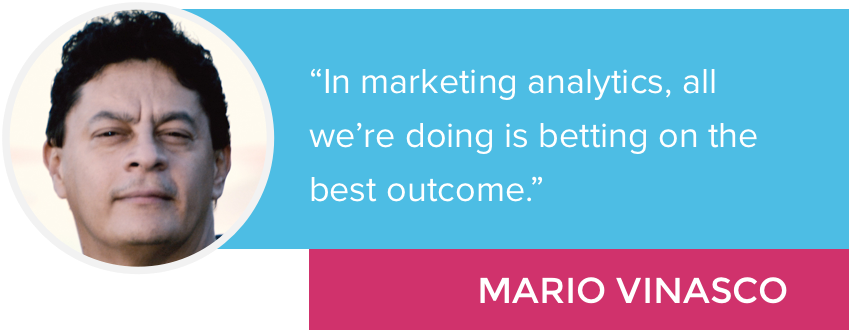
So...marketers must predict what will work well, then back the hypothesis with user data and previous experiment results, and finally, focus on the facts of the outcome to learn how to move forward.
Phew.
Sometimes, and especially in businesses with massive heaps of data, such as Facebook, it can get tricky to separate and organize your findings into logical conclusions.
Even trickier still is finding the conclusion that your boss is expecting from the data.
Sometimes, we expect certain results when we test, and unfortunately, the results may not be significant enough to prove the point. Vinasco’s analogy really puts it into perspective:
![“[As an analyst, you try to] torture the data until it confesses what you want to hear.” - Mario Vinasco](https://www.herosmyth.com/sites/default/files/blog/Digital%20Summit%20Denver%202017/analytics/Mario%20Vinasco%202.png)
However, concentrating on the desired outcome can make it tempting to misinterpret data intentionally, or just be biased toward findings in general.
Vinasco reminds us that:
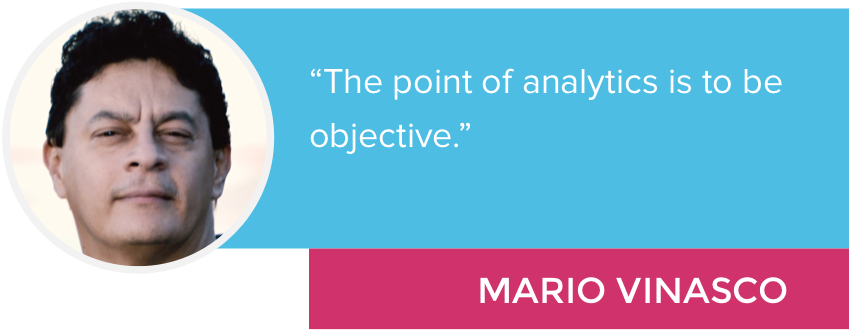
Always stick to the facts - and don’t fill in a missing picture to buff up your findings!
Let’s talk about measuring content marketing specifically for a minute.
First, I learned that the benefits of content marketing take a loooong time - a year on average, to be more exact.
This means that you need to measure KPIs that show you how content improves your business over the long run.
As Kong sums up,
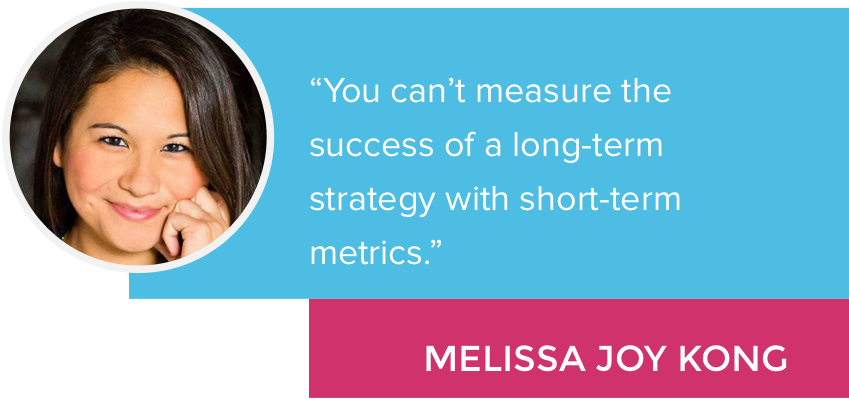
You just can’t.
This week’s pageviews won’t indicate whether or not your content is converting prospects, but changes in revenue certainly will.
The final lesson I learned from all of the information-packed content marketing presentations was that there cannot be silos between departments.
At Ascend, we’re a pretty lean team, so all of the different roles of digital marketing are part of my role.
However, bigger companies likely have some people who strictly write content and others who strictly analyze it.
Gilgoff explained that those who craft the content must be a part of the analysis in order to gain insights on what works - and what doesn’t - going forward. He said:
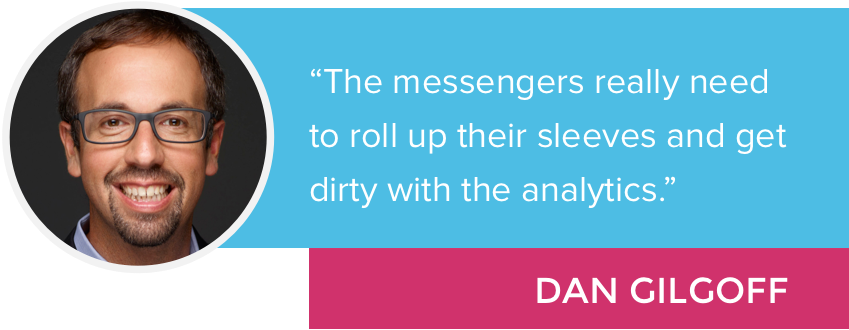
So National Geographic’s reporters get dirty when chasing stories in the wild, and their content marketers get dirty analyzing the aftermath.
The takeaway: everyone involved in the content marketing side of things also need to understand how and why content performs well or doesn’t, then take those lessons and apply them to future content.
Marketing Motivation
And finally, there were a few gems thrown out there during the two-day conference that were simply and highly motivating.
After getting hit with a deluge of information, it was easy to feel a tad overwhelmed.
These speakers, knowingly or not, provided hope for the future of digital marketing with their comforting and inspiring words.
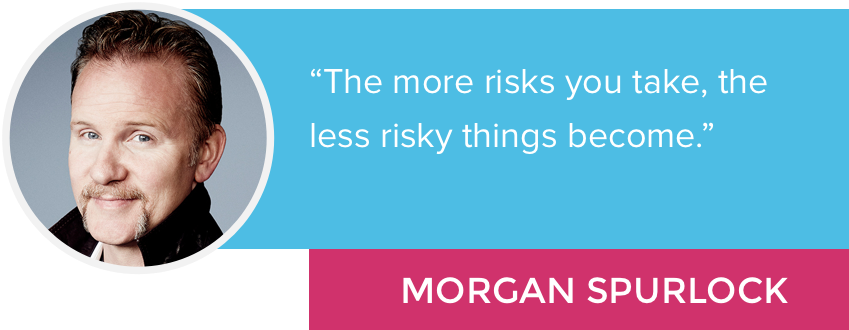
While Morgan Spurlock was referring to his wildly successful film ideas that sounded far-fetched in the ideation phase, this quote also serves to remind all marketers that in order to start seeing more success, we have to take calculated risks and try new strategies.
Digital marketing is a constantly evolving landscape, but staying ahead with new insights and tools takes proactiveness and guts.
Spurlock went on to say,
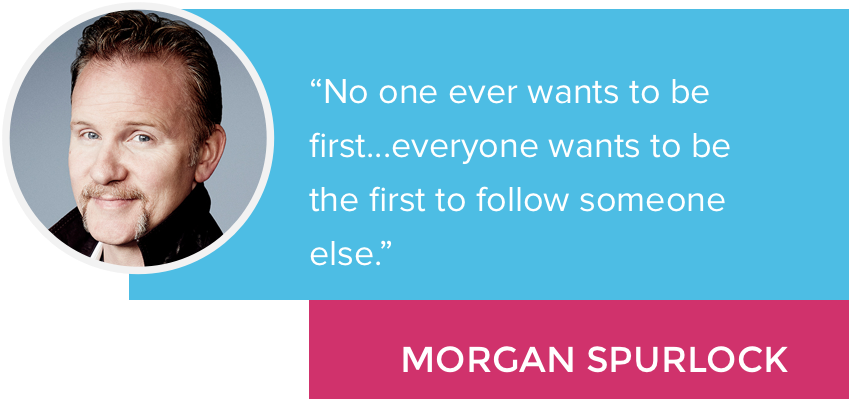
Trendsetters are uncommon; trend followers are not.
If you want a chance to truly wow your crowd and show the boldness of your brand, do something that hasn’t been done before, but do it well.
Give consumers something they can admire and emulate in their own lives.
Otherwise, you may get stuck trying to stand out by being the cheapest in your market as a last resort.
Take some advice from Seth Godin here:
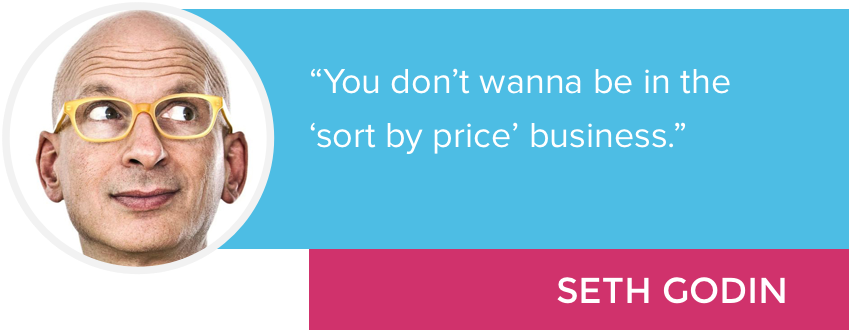
Price is not a competitive advantage because being cheap isn’t unique, valuable, or admirable - and therefore not effective in convincing consumers to buy in.
Essentially, the goal to being a vital part of your customers’ lives has to do with the value that you bring them with every interaction.
Godin puts it perfectly:
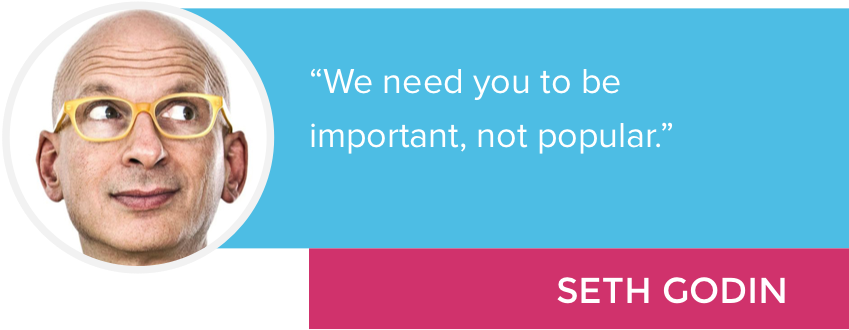
Mic drop.
That's all for now, folks
I hope you enjoyed my recap of Digital Summit Denver, and that you've gained knowledge that you can now take and apply to your marketing strategy.
If you attended the conference, did I miss anything important? If you did or didn't attend this year, I hope to see you there next time around!




